-
What are the applications of blockchain in the financial industr
-
Date:2024-04-20 18:11:21 Channel:Trade Read:
In today's digital era, blockchain technology, as a decentralized, safe and reliable technical means, is gradually entering the core of the financial industry. The combination of blockchain and the financial industry not only brings innovation to traditional finance, but also brings a series of challenges. This article will deeply explore the application of blockchain in the financial field from multiple angles, and take stock of its impact and future development trends.Blockchain technology, as a decentralized distributed ledger technology, is widely used in many fields of the financial industry. First, blockchain technology can improve the security and transparency of financial transactions. Through the immutability and decentralization of blockchain, data tampering and fraud can be effectively prevented. For example, digital currency transaction records are permanently stored on the blockchain and can be viewed by anyone, thereby increasing the transparency and traceability of transactions.Secondly, blockchain technology can speed up the settlement and clearing process of financial transactions. Settlement by traditional financial institutions usually takes several days, but blockchain can achieve almost real-time settlement, greatly improving transaction efficiency. For example, international money transfers can be completed in minutes through blockchain technology, while traditional methods may take days or even longer.Furthermore, blockchain technology can also reduce the cost of financial transactions. Due to the decentralized nature of the blockchain, intermediate links and fees can be reduced, and the handling fees of financial transactions can be reduced. For example, smart contract technology can be used to automatically execute contract terms, saving the labor costs of traditional contract execution.In addition to the above applications, blockchain technology is also exploring more possibilities in the financial field. For example, blockchain can be used for identity authentication, debt registration, risk management, etc., bringing more innovation to the financial industry. At the same time, as blockchain technology continues to develop, financial supervision is also facing new challenges and opportunities. How to promote innovation while ensuring financial stability is a question that financial regulatory authorities need to think about.However, the application of blockchain technology in the financial field also faces some challenges. First of all, privacy protection and data security are important issues facing blockchain technology. Since the data on the blockchain is publicly verifiable, how to protect users' privacy and data security is an urgent problem that needs to be solved. Secondly, the standardization of blockchain technology and imperfect laws and regulations also restrict its application in the financial field. The lack of unified standards and regulatory frameworks may lead to confusion and risks in technology applications.To sum up, the application of blockchain technology in the financial industry has brought about both innovation and challenges. With the continuous development and improvement of technology, it is believed that blockchain will play an increasingly important role in the financial field. Financial institutions and regulatory authorities need to work together to promote the healthy development of blockchain technology and achieve digital transformation and innovative development in the financial industry. Let us wait and see to witness more exciting integrations of blockchain and the financial field.The four most famous international exchanges:
Binance INTL
OKX INTL
Gate.io INTL
Huobi INTL
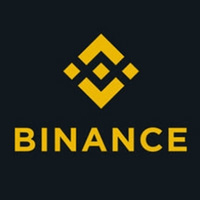
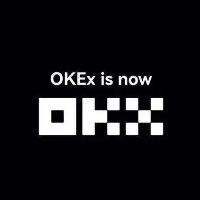
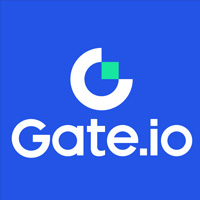

China Line APP DL China Line APP DL
China Line APP DL
China Line APP DL
Note: The above exchange logo is the official website registration link, and the text is the APP download link.

What are the applications of blockchain in the financial industry? Blockchain can be widely used in the financial industry. It can be said that it can be perfectly integrated with the financial industry. So what are the applications of blockchain in the financial industry so far? Blockchain has inherent advantages in the financial field. On the Internet, this is determined by the genes of blockchain. From a subjective point of view, financial institutions are the most willing to explore blockchain applications and need new technologies to improve operational efficiency and reduce costs to cope with the current status of the entire global economy.
Objectively speaking, the financial industry has huge market space, and a little progress can bring huge benefits. The financial industry is an industry with extremely high requirements for security and stability. If the application of blockchain in the financial field is verified, it will have a huge demonstration effect and be quickly promoted in other industries. In the financial field, in addition to digital currency applications, blockchain has gradually begun to be applied in cross-border payments, supply chain finance, insurance, digital bills, asset securitization, bank credit reporting and other fields.
(1) Insurance business: With the development of blockchain technology, personal health status, accident records and other information may be uploaded to the blockchain in the future, allowing insurance companies to obtain risks in a more timely and accurate manner when customers apply for insurance. information, thereby reducing underwriting costs and improving efficiency. The shared and transparent features of the blockchain reduce information asymmetry and the risk of adverse selection; while its historically traceable features help reduce moral hazard, thereby reducing the difficulty and cost of insurance management.
(2)
Asset securitization: The business pain point in this field lies in the fact that the authenticity of the underlying assets cannot be guaranteed; there are many participants, many operating links, low transaction transparency, and information asymmetry, making it difficult to control risks. The pain point of data lies in the low efficiency of transfers between participants, the clearing and reconciliation of funds between parties’ trading systems often requires a lot of manpower and material resources, and there are multiple online and offline channels for asset repayment, making it impossible to monitor the true status of assets, and there are still assets After the package is formed, the trust of all parties in the transaction chain in the authenticity and accuracy of the underlying asset data is an issue.
(3) Digital bills: The pain points in this field lie in three risk issues. Operational risk, due to the centralization of the system, once the central server has a problem, the entire market will be paralyzed; market risk, according to statistics, in 2016, there were seven risk events involving hundreds of millions of dollars, involving multiple banks; moral hazard , there are incidents such as "one ticket selling more" and false commercial bills in the market. Blockchain's disintermediation, system stability, consensus mechanism, and non-tampering characteristics reduce operational risks, market risks, and moral risks in traditional centralized systems.
(4)
Cross-border payment: The pain points in this field are long payment cycle, high fees and low transaction transparency. The third-party payment company is the center to complete the accounting, settlement and liquidation in the payment process, and the payment cycle is long. For example, the payment cycle for cross-border payments is more than three days, and the fees are high. The blockchain is deintermediated, the transactions are open, transparent and cannot be tampered with. There is no third-party payment institution to join, which shortens the payment cycle, reduces fees and increases transaction transparency.
(5) Credit management: The pain points in this field are the lack of data sharing and the asymmetry of information between credit agencies and users; formal market-oriented data collection channels are limited, and the battle for data sources consumes a lot of costs; data privacy protection issues are prominent and the traditional technical architecture Difficulty meeting new requirements, etc. In the field of credit reporting, blockchain has the characteristics of decentralization, trustlessness, timestamps, asymmetric encryption and smart contracts. At the technical level, it ensures that limited and controllable credit can be achieved on the basis of effectively protecting data privacy. Data sharing and verification.
(6) Supply chain finance: The pain points in this field are the long financing cycle and high costs. Centered on the core enterprise system of the supply chain, it is difficult for third-party credit enhancement institutions to authenticate the authenticity of various relevant vouchers in the supply chain, resulting in long manual review times and high financing costs. The blockchain's deintermediation, consensus mechanism, and non-tampering characteristics eliminate the need for third-party credit enhancement agencies to verify the authenticity of various relevant certificates in the supply chain, reducing financing costs and shortening the financing cycle.
(7) Asset securitization: The business pain point in this field lies in the fact that the authenticity of the underlying assets cannot be guaranteed; there are many participants, multiple operating links, low transaction transparency, and information asymmetry, making it difficult to control risks. The pain point of data lies in the low efficiency of transfers between participants, the clearing and reconciliation of funds between parties’ trading systems often requires a lot of manpower and material resources, and there are multiple online and offline channels for asset repayment, making it impossible to monitor the true status of assets, and there are still assets After the package is formed, the trust of all parties in the transaction chain in the authenticity and accuracy of the underlying asset data is an issue. Blockchain's deintermediation, consensus mechanism, and non-tampering characteristics increase data flow efficiency, reduce costs, monitor the true status of assets in real time, and ensure the trust of all parties in the transaction chain in the underlying assets.
This article focuses on the financial field and systematically introduces the background, application promotion, technology and application limitations of blockchain technology. Based on this technology, it analyzes the large-scale application of blockchain in the financial field from the perspective of financial market infrastructure, monetary policy and system risks. risks and problems arising.
I'll answer.
Articles related to tags
- US Senator Bitcoin can vote with its feet Don’t create a hosti
- How to trade OK Wallet coins OK Wallet Trading Tutorial
- Taking stock of the mysterious creators of Bitcoin Who are thes
- How to download the Pancake Exchange APP Pancakeswap official w
- How to buy Litecoin Cash LCC Currency Buying and Trading Tutori
- What does Bitcoin quarterly contract mean Popular explanations
- Hong Shao Rou HSR Comprehensive Introduction to Trading Platfo
- Rich Dad author Global economy may collapse Bitcoin is worth $
- Bitcoin price dropped by half What are Bitcoin miners and minin
- What should I do if my Bitcoin position is liquidated Do I have
Trade Related article
- Bitmine 以太坊持仓量逾 83.3 万枚,价值近 30 亿美元
- Binance 钱包网页版现已上线
- 美国华人币圈:CrediX 黑客已将 450 万美元所盗资产桥接至以太坊网络
- Binance Alpha已上线Cycle Network(CYC)
- CrediX 承诺 24-48 小时内全额恢复用户资金
- Coinsilium Group子公司Forza增持57.54枚BTC,总持有181.96枚
- 加强个人境外收入监管 境外买卖股票收入也要缴税
- 美股上市公司 Sequans 增持 85 枚比特币,总持有量达 3157 枚
- MGBX 将上线 POL、STRK、CFX、VELVET、AIO现货交易
- 美国华人币圈:将空投代币代码由DARK改为DARKSTAR
user
2480
Ask
979K+
reading
0
Answer
3H+
Upvote
2H+
Downvote
-
 Artery Network(ARTR幣)在那裏挖?ArteryNetwork(ARTR幣)是一種新興的加密貨幣,它的採礦過程與比特幣和以太幣等其他加密貨幣類似。ARTR幣的挖礦過程是通過計算機資源解決複雜的數學問題來獲取新的幣。這一過程需要大量的計算能力和電力,因此挖礦者需要投入相應的硬件和電力成本。 A2025-03-26 21:33:09
Artery Network(ARTR幣)在那裏挖?ArteryNetwork(ARTR幣)是一種新興的加密貨幣,它的採礦過程與比特幣和以太幣等其他加密貨幣類似。ARTR幣的挖礦過程是通過計算機資源解決複雜的數學問題來獲取新的幣。這一過程需要大量的計算能力和電力,因此挖礦者需要投入相應的硬件和電力成本。 A2025-03-26 21:33:09 -
 Litbinex Coin(LTB幣)走勢如何LitbinexCoin LTB幣 作為一種加密貨幣,其價格走勢取決於市場供求和投資者對其價值的認知。在過去的一段時間裡,LTB幣的價格可能出現了一些波動,這可能是由於市場情緒、新聞事件或技術因素所引起的。 在過去的幾個月中,全球加密貨幣市場經歷了一些波動2025-03-26 21:33:03
Litbinex Coin(LTB幣)走勢如何LitbinexCoin LTB幣 作為一種加密貨幣,其價格走勢取決於市場供求和投資者對其價值的認知。在過去的一段時間裡,LTB幣的價格可能出現了一些波動,這可能是由於市場情緒、新聞事件或技術因素所引起的。 在過去的幾個月中,全球加密貨幣市場經歷了一些波動2025-03-26 21:33:03 -
 Starbound(SBD幣)最新動態SBD幣,即Starbound,是一种基于区块链技术的加密货币,旨在为用户提供一种快速、安全和低成本的支付方式。最近,Starbound团队宣布了一系列重大动态,以提升其在加密货币市场的地位和影响力。 首先,Starbound团队宣布他们已经与几家知名的加2025-03-26 21:32:59
Starbound(SBD幣)最新動態SBD幣,即Starbound,是一种基于区块链技术的加密货币,旨在为用户提供一种快速、安全和低成本的支付方式。最近,Starbound团队宣布了一系列重大动态,以提升其在加密货币市场的地位和影响力。 首先,Starbound团队宣布他们已经与几家知名的加2025-03-26 21:32:59 -
 Catcoin(CATS幣)最新新聞最新消息指出,Catcoin(CATS幣)在近期取得了巨大的成功,吸引了越來越多投資者的關注。這種加密貨幣是專為貓主人和貓愛好者而設計的,旨在建立一個支持貓咪社群的加密支付系統。 Catcoin的價值一直在不斷上漲,吸引了許多散戶和機構投資者的投入。這種加2025-03-26 21:32:54
Catcoin(CATS幣)最新新聞最新消息指出,Catcoin(CATS幣)在近期取得了巨大的成功,吸引了越來越多投資者的關注。這種加密貨幣是專為貓主人和貓愛好者而設計的,旨在建立一個支持貓咪社群的加密支付系統。 Catcoin的價值一直在不斷上漲,吸引了許多散戶和機構投資者的投入。這種加2025-03-26 21:32:54 -
 YFPI(YFPI幣)最新資訊YFPIYFPI幣是一種加密貨幣,它是由一個名為YFPI的去中心化金融平台所發行的。YFPI的目標是成為一個具有高度流動性和穩定價值的加密貨幣,讓用戶可以更方便地進行交易和支付。 最近,YFPI的價格一直在波動,受到市場情緒和投資者信心的影響。儘管如此,Y2025-03-26 21:32:49
YFPI(YFPI幣)最新資訊YFPIYFPI幣是一種加密貨幣,它是由一個名為YFPI的去中心化金融平台所發行的。YFPI的目標是成為一個具有高度流動性和穩定價值的加密貨幣,讓用戶可以更方便地進行交易和支付。 最近,YFPI的價格一直在波動,受到市場情緒和投資者信心的影響。儘管如此,Y2025-03-26 21:32:49 -
 WaveEduCoin(WEC幣)是詐騙?WaveEduCoinWEC幣是一個虛擬貨幣項目,宣稱旨在為教育領域提供解決方案。然而,有人對這個項目提出了質疑,認為WaveEduCoinWEC幣可能是一個詐騙項目。 首先,WaveEduCoinWEC幣的團隊背景和專業性受到質疑。許多投資者發現他們在官2025-03-26 21:32:43
WaveEduCoin(WEC幣)是詐騙?WaveEduCoinWEC幣是一個虛擬貨幣項目,宣稱旨在為教育領域提供解決方案。然而,有人對這個項目提出了質疑,認為WaveEduCoinWEC幣可能是一個詐騙項目。 首先,WaveEduCoinWEC幣的團隊背景和專業性受到質疑。許多投資者發現他們在官2025-03-26 21:32:43 -
 Pegs Shares(PEGS幣)符合當地法律嗎PegsShares(PEGS幣)是一種加密貨幣,目前在市場上並無法得到明確的法律規範。然而,對於加密貨幣的法律規定在各國各地可能有所不同,因此在使用和投資這種加密貨幣時需要謹慎對待。 在一些國家,加密貨幣被視為合法的貨幣形式,並受到相應的法律保護。然而,2025-03-26 21:32:36
Pegs Shares(PEGS幣)符合當地法律嗎PegsShares(PEGS幣)是一種加密貨幣,目前在市場上並無法得到明確的法律規範。然而,對於加密貨幣的法律規定在各國各地可能有所不同,因此在使用和投資這種加密貨幣時需要謹慎對待。 在一些國家,加密貨幣被視為合法的貨幣形式,並受到相應的法律保護。然而,2025-03-26 21:32:36 -
 JUS Token(JUS幣)總部在那JUSTokenJUS幣是一家总部位于新加坡的加密货币公司。新加坡是一个国际金融中心,拥有完善的法律体系和监管机制,吸引了许多加密货币和区块链公司选择在这里设立总部。 JUSTokenJUS幣总部位于新加坡的好处包括: 1 法律体系完善:新加坡的法律体系健2025-03-26 21:32:30
JUS Token(JUS幣)總部在那JUSTokenJUS幣是一家总部位于新加坡的加密货币公司。新加坡是一个国际金融中心,拥有完善的法律体系和监管机制,吸引了许多加密货币和区块链公司选择在这里设立总部。 JUSTokenJUS幣总部位于新加坡的好处包括: 1 法律体系完善:新加坡的法律体系健2025-03-26 21:32:30 -
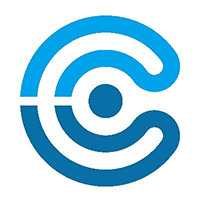 I-COIN(ICN幣)非法傳銷ICN幣是一種加密貨幣,類似於比特幣或以太幣,通過區塊鏈技術進行交易和存儲價值。然而,近年來有一些人利用ICN幣進行非法傳銷活動,給投資者帶來了風險和損失。 非法傳銷是指通過招聘下線、忽悠投資者參與項目來賺取高額回報的行為。在ICN幣的非法傳銷中,一些不法2025-03-26 21:32:27
I-COIN(ICN幣)非法傳銷ICN幣是一種加密貨幣,類似於比特幣或以太幣,通過區塊鏈技術進行交易和存儲價值。然而,近年來有一些人利用ICN幣進行非法傳銷活動,給投資者帶來了風險和損失。 非法傳銷是指通過招聘下線、忽悠投資者參與項目來賺取高額回報的行為。在ICN幣的非法傳銷中,一些不法2025-03-26 21:32:27 -
 Glitch Protocol(GLCH幣)交易合法不GlitchProtocol(GLCH幣)是一種加密貨幣,其交易合法性取決於當地政府對加密貨幣的規定和監管。在一些國家,加密貨幣被視為合法的資產,可以自由交易和使用。然而,在一些國家,政府可能對加密貨幣實施嚴格的監管措施,甚至禁止其交易。 若要確定Glit2025-03-26 21:32:20
Glitch Protocol(GLCH幣)交易合法不GlitchProtocol(GLCH幣)是一種加密貨幣,其交易合法性取決於當地政府對加密貨幣的規定和監管。在一些國家,加密貨幣被視為合法的資產,可以自由交易和使用。然而,在一些國家,政府可能對加密貨幣實施嚴格的監管措施,甚至禁止其交易。 若要確定Glit2025-03-26 21:32:20
-
 Cat(CAT幣)的交易量CAT幣是一種虛擬貨幣,目前在加密貨幣市場中交易量相對較小。然而,隨著加密貨幣市場的不斷發展和成長,CAT幣的交易量也在逐漸增加。 CAT幣的交易量取決於市場需求和供應情況,以及交易所的交易活動。一般來說,CAT幣的交易量可能會受到市場情緒、新聞事件、技術2025-03-26 21:34:43
Cat(CAT幣)的交易量CAT幣是一種虛擬貨幣,目前在加密貨幣市場中交易量相對較小。然而,隨著加密貨幣市場的不斷發展和成長,CAT幣的交易量也在逐漸增加。 CAT幣的交易量取決於市場需求和供應情況,以及交易所的交易活動。一般來說,CAT幣的交易量可能會受到市場情緒、新聞事件、技術2025-03-26 21:34:43 -
 紅域(巧克力)(QKL幣)涉嫌詐騙紅域(巧克力)(QKL幣)是一種虛擬貨幣,近期涉嫌詐騙的傳聞不斷。根據一些用戶的投訴和報導,有人聲稱在投資這個虛擬貨幣時遭受了損失,而且無法取回投資的資金。 在這種情況下,投資者應該格外小心,避免受騙。首先,要確保所投資的虛擬貨幣是合法的,有穩定的背景和可2025-03-26 21:34:37
紅域(巧克力)(QKL幣)涉嫌詐騙紅域(巧克力)(QKL幣)是一種虛擬貨幣,近期涉嫌詐騙的傳聞不斷。根據一些用戶的投訴和報導,有人聲稱在投資這個虛擬貨幣時遭受了損失,而且無法取回投資的資金。 在這種情況下,投資者應該格外小心,避免受騙。首先,要確保所投資的虛擬貨幣是合法的,有穩定的背景和可2025-03-26 21:34:37 -
 Yukon(YUKON幣)倒閉了最近有傳聞指出,Yukon(YUKON幣)可能即將倒閉。這個消息引起了市場的驚慌和困憂,許多投資者和持有者都在擔心他們的資金和投資是否會受到影響。 Yukon是一種加密貨幣,最初是在2017年推出的。它在推出後吸引了很多投資者和用戶,因為它的技術和應用前景2025-03-26 21:34:33
Yukon(YUKON幣)倒閉了最近有傳聞指出,Yukon(YUKON幣)可能即將倒閉。這個消息引起了市場的驚慌和困憂,許多投資者和持有者都在擔心他們的資金和投資是否會受到影響。 Yukon是一種加密貨幣,最初是在2017年推出的。它在推出後吸引了很多投資者和用戶,因為它的技術和應用前景2025-03-26 21:34:33 -
 AGPC TOKEN(AGPC幣)不合法AGPCTOKENAGPC幣 是一种虚拟货币,它并不是任何国家的法定货币,也不受到任何监管机构的监管。因此,AGPCTOKEN 不具备合法货币的属性,也没有法律地位。在很多国家和地区,虚拟货币并不被认可为合法支付工具,因此使用AGPCTOKEN 进行交易可2025-03-26 21:34:27
AGPC TOKEN(AGPC幣)不合法AGPCTOKENAGPC幣 是一种虚拟货币,它并不是任何国家的法定货币,也不受到任何监管机构的监管。因此,AGPCTOKEN 不具备合法货币的属性,也没有法律地位。在很多国家和地区,虚拟货币并不被认可为合法支付工具,因此使用AGPCTOKEN 进行交易可2025-03-26 21:34:27 -
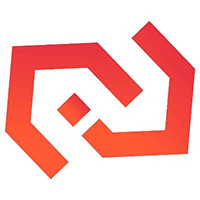 RentalChain(RNL幣)在中國禁止RentalChainRNL幣是一种基于区块链技术的租赁服务平台的代币,旨在通过区块链技术实现租赁行业的数字化和智能化。然而,由于中国政府对加密货币的监管政策非常严格,目前RentalChain在中国被禁止。 中国政府自2017年开始加强对加密货币的监管,2025-03-26 21:34:19
RentalChain(RNL幣)在中國禁止RentalChainRNL幣是一种基于区块链技术的租赁服务平台的代币,旨在通过区块链技术实现租赁行业的数字化和智能化。然而,由于中国政府对加密货币的监管政策非常严格,目前RentalChain在中国被禁止。 中国政府自2017年开始加强对加密货币的监管,2025-03-26 21:34:19 -
 FlapXCoin(FLAPX幣)是空氣幣FlapXCoinFLAPX幣並不是空氣幣,而是一種虛擬加密貨幣。空氣幣通常指的是沒有實際的價值或用途,只是為了炒作而被創建出來的虛擬貨幣。然而,FlapXCoin是一種經過加密技術保護的數字貨幣,具有真實的價值和用途。 FlapXCoin是通過區塊鏈技術2025-03-26 21:34:13
FlapXCoin(FLAPX幣)是空氣幣FlapXCoinFLAPX幣並不是空氣幣,而是一種虛擬加密貨幣。空氣幣通常指的是沒有實際的價值或用途,只是為了炒作而被創建出來的虛擬貨幣。然而,FlapXCoin是一種經過加密技術保護的數字貨幣,具有真實的價值和用途。 FlapXCoin是通過區塊鏈技術2025-03-26 21:34:13 -
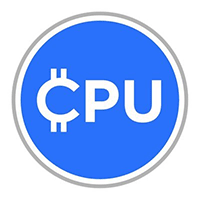 CPUcoin(CPU幣)是什麽CPUcoin是一种基于区块链技术的加密货币,旨在通过共享计算资源来提高计算机性能和效率。CPUcoin的目标是利用闲置的计算资源,例如个人计算机或数据中心的服务器,来为用户提供更好的计算服务。CPUcoin的核心概念是将计算资源共享化,使得用户可以通过共2025-03-26 21:34:07
CPUcoin(CPU幣)是什麽CPUcoin是一种基于区块链技术的加密货币,旨在通过共享计算资源来提高计算机性能和效率。CPUcoin的目标是利用闲置的计算资源,例如个人计算机或数据中心的服务器,来为用户提供更好的计算服务。CPUcoin的核心概念是将计算资源共享化,使得用户可以通过共2025-03-26 21:34:07 -
 XMZ(XMZ幣)APP下載地址XMZ(XMZ幣)是一種加密貨幣,它是基於區塊鏈技術的去中心化數字貨幣。如果您想要使用XMZ幣進行交易或投資,您可以下載XMZ的官方應用程序來管理您的資產。 XMZ應用程序可以讓您輕鬆地查看您的賬戶餘額、進行轉賬和收款。同時,您還可以通過應用程序查看最新的2025-03-26 21:34:02
XMZ(XMZ幣)APP下載地址XMZ(XMZ幣)是一種加密貨幣,它是基於區塊鏈技術的去中心化數字貨幣。如果您想要使用XMZ幣進行交易或投資,您可以下載XMZ的官方應用程序來管理您的資產。 XMZ應用程序可以讓您輕鬆地查看您的賬戶餘額、進行轉賬和收款。同時,您還可以通過應用程序查看最新的2025-03-26 21:34:02 -
 Sergey Save Link(SSL幣)近期會暴跌?近期,有一些市場分析師對SergeySaveLink SSL幣未來的走勢感到悲觀,認為它可能會暴跌。這種預測主要基於幣值波動性高和市場不穩定的情況下,SSL幣可能會受到影響而下跌。 首先,SSL幣是一種虛擬加密貨幣,價值受到市場供需和投資者情緒的影響。在市2025-03-26 21:33:58
Sergey Save Link(SSL幣)近期會暴跌?近期,有一些市場分析師對SergeySaveLink SSL幣未來的走勢感到悲觀,認為它可能會暴跌。這種預測主要基於幣值波動性高和市場不穩定的情況下,SSL幣可能會受到影響而下跌。 首先,SSL幣是一種虛擬加密貨幣,價值受到市場供需和投資者情緒的影響。在市2025-03-26 21:33:58 -
 Authoreon(AUN幣)近期會暴漲?近期,人們對Authoreon(AUN幣)的關注度正在逐漸增加,這可能導致其價格走勢出現一定程度的波動。有一些人認為,Authoreon的價格可能會出現暴漲的情況,這主要是基於以下幾個原因: 首先,Authoreon是一個新興的加密貨幣項目,它擁有一個強大2025-03-26 21:33:53
Authoreon(AUN幣)近期會暴漲?近期,人們對Authoreon(AUN幣)的關注度正在逐漸增加,這可能導致其價格走勢出現一定程度的波動。有一些人認為,Authoreon的價格可能會出現暴漲的情況,這主要是基於以下幾個原因: 首先,Authoreon是一個新興的加密貨幣項目,它擁有一個強大2025-03-26 21:33:53


 Bitcoin
Bitcoin Binance幣安
Binance幣安


